Winters are harsh in Billings, Montana, but not as harsh as much of the state.
The rest of the year is very pleasant. People like Billings, as it has seen a lot of growth in recent years.
While many Midwestern cities have lost people, Billings keeps growing.
That has caused a bit of an overcrowding problem, but that isn’t stopping people from coming.
There is a lot to like about Billings, and the few drawbacks are things that can be easily overcome.
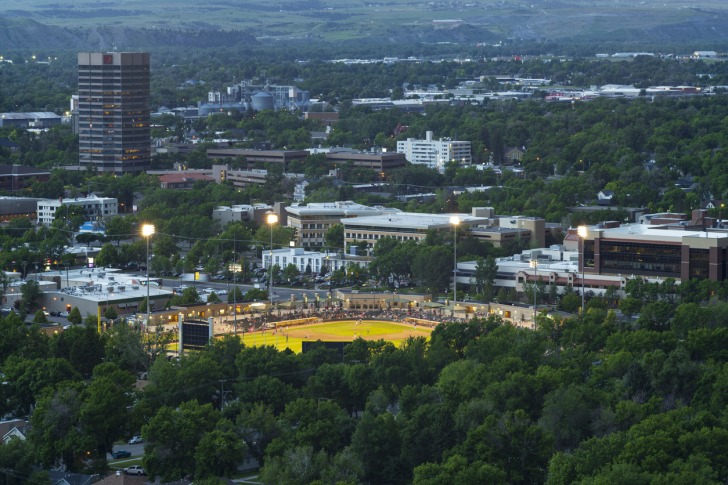
Contents
Pros of Living in Billings Montana
1. Housing Costs
The average home in Billings is valued at $379,000, significantly less than the national average of $430,000.
There are places that are a lot cheaper, but this is far below the western part of the state which is about at the national average.
It may also be a good time to invest in Billings, and house values have gone up about four percent per year for the last few years.
Rents are also reasonable at $600 and up.
2. Cost of Living
The cost of living in Billings is low when compared to the western part of the state, or the western coast states like Oregon or Washington.
The cost of living includes things like housing, utilities, health care, transportation, groceries, taxes, and so forth.
The cost of living for a single adult in Billings is $35,000.
The state average is $36,500, and the national average is $38,400.
3. Plenty to Do
Billings is not known for its thriving nightlife, but there is still plenty to do in the largest city in Montana.
There are a lot of art galleries, and theaters, as well as tourist attractions and lots of good restaurants.
The city also has things like water parks, indoor trampolines, and skating parks.
The mountains are just 50 miles away, and there is plenty of nice countryside to enjoy.
4. The Beer Trail
Billings has nine beer breweries, which would put it in the top 10 nationally for breweries per capita.
To make this even more convenient, there is a 1.5-mile trail through town that connects them.
The loop goes through the historic downtown section, and you don’t have to drive to get from one to the other.
Local breweries are popular across the state.
Montana has the second most breweries per capita in the United States.
5. Small Town Vibe
Montana is a rural state, and Billings is the largest city in the state with 149,0000 people.
Slightly more than 10 percent of the people in the whole state live in Billings.
It still maintains the small-town charm that much smaller towns have and that Billings has had for more than 100 years.
The city is big enough though, to get almost anything you could want.
It has a small-town vibe with big-city amenities.
6. Outdoor Activities
If you like being outdoors, you will love Montana, and Billings is a good place to have a base, The Rocky Mountains are far to the west, but there are smaller mountains just 50 miles away.
Rock climbing, hiking, camping, and some fun summer activities.
In Winter, you can do cross-country skiing or outdoor skating.
Montana still has a lot of wild areas, and it is easy to spot wildlife around Billings.
Antelope, Big Horn Sheep, and mountain goats are just a few animals you may see in the wild.
7. Strong Economy
Billings’ unemployment rate of 1.8 percent is well below the national average.
The poverty level is just below 10 percent, and the national average is 13 percent.
The city is also growing, six percent population increase over the last six years.
The population has risen by 40,000 since 1990.
The influx of people could cause problems, but it is an indicator that people want to live there.
8. Friendly People
Maybe it is because of the rural nature of the state, but people seem generally friendly here.
People are welcoming to newcomers, and it won’t take long to fit into the social network.
People are usually willing to help each other out, especially in winter when cars get stuck in the snow.
They are also used to newcomers here, so no one will be surprised if you need directions.
Cons of Living in Billings, Montana
1. Cold Winters
Winters are long and very cold and there is a lot of snow.
From late October through March, there is an inch of snow on one-third of the total days.
There is some snow on the ground most of that time.
Temperatures get around zero, and may not get above freezing for a couple of months.
There are a lot of winter-type activities though, such as cross-country skiing or riding a snowmobile.
Hills covered with snow, and blue skies, are a trademark of Billings.
It does snow a lot and stays cold for a long time, but there are plenty of bright sunny days in the mix.
2. High Crime Rate
Billings goes against conventional wisdom in that it has low unemployment and low poverty, but still has a high crime rate.
Part of that is due to a smaller population, so a few crimes look like a lot more than there really are.
Still, there are 9.9 violent crimes per 100,000 people in Billings, which is more than double the national average of four.
It is also a little above the state average.
It’s even worse for property crime.
There are 45 property crimes per 100,000, while the national average is 19.
Again it is a bit above the state average as well.
3. Drugs and Alcohol
There is a problem with drugs and alcohol in Billings, and that may contribute to the higher crime rate.
Lots of cold gray days with little sunshine can lead to depression, and people turn to drugs for relief.
Some neighborhoods are much worse than others in Billings.
In one survey 10.7 percent of the people said they had used illegal drugs in the past month, while the national average is 8.9 percent.
A recent survey said drug overdoses were up 20 percent across the state.
4. Overcrowding
Billings has been growing fast, and the city has struggled to keep up with the new people.
There is still plenty of housing available, but people start to feel crowded when there are too many people around.
The city is struggling to keep its infrastructure in place for all the new people moving to Billings.
There are an estimated 2615 people per square mile in Billings.
Most cities have around 300 people per square mile.
5. No Exciting Nightlife
Most cities the size of Billings would have a thriving nightlife, but that is not the case here.
There are local bars, and some small clubs, but there is no area that has a concentration of venues that could produce a fun nightlife.
There are two small colleges, but there is no big party scene at either one of them.
This might be a drawback more for young adults than it is for older people.
6. Too Many Casinos
Montana has several large casinos that attract a lot of people.
Some say this has sucked the life out of the nightlife scene in the city.
Regular nightclubs struggle to compete for customers and the nightlife scene struggles.
There are also a lot of small gas station-type casinos that attract people.
The casinos are contributing to urban sprawl and are pulling people away from the downtown, where nightlife used to exist.
7. Constant Road Construction
It certainly seems like it is constant anyway.
Winters are hard on streets and highways, so during the short summer months, crews work hard to repair the damage caused by winter.
This would mean construction inside the city in most cases.
Due to the population increase, new streets and roads are constantly being built on the edge of town.
A lot of it is just the nature of living in a harsh environment and using the short summer months to fix what they can before winter starts again.
8. Low-Income Jobs
While the poverty level is low, and there are plenty of jobs, most jobs do not pay all that well.
The average individual income is $25,000, and the average household income is $47,00, for an average of $34,000.
This is far below the national median income of $74,000 for a household.
The national average income is $60,000, which is much higher than what you can make in Montana.
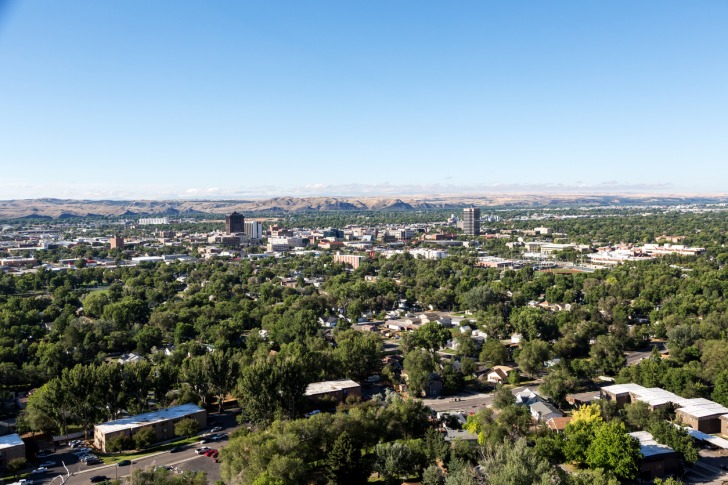
Pros and Cons of Living in Billings, MT – Summary Table
| Pros of Living in Billings Montana | Cons of Living in Billings, Montana |
|---|---|
| 1. Housing Costs | 1. Cold Winters |
| 2. Cost of Living | 2. High Crime Rate |
| 3. Plenty to Do | 3. Drugs and Alcohol |
| 4. The Beer Trail | 4. Overcrowding |
| 5. Small Town Vibe | 5. No Exciting Nightlife |
| 6. Outdoor Activities | 6. Too Many Casinos |
| 7. Strong Economy | 7. Constant Road Construction |
| 8. Friendly People | 8. Low-Income Jobs |
Billings Safety Overview
READ THE FULL REPORT: Billings Safety Review
Safety Index: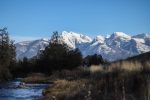
- OVERALL RISK: MEDIUM
- TRANSPORT & TAXIS RISK: LOW
- PICKPOCKETS RISK: MEDIUM
- NATURAL DISASTERS RISK: MEDIUM
- MUGGING RISK: MEDIUM
- TERRORISM RISK: LOW
- SCAMS RISK: MEDIUM
- WOMEN TRAVELERS RISK: MEDIUM
Frequently Asked Questions
How much snow does Billings get?
Snow accumulates overtime during the winter because it does not have a chance to melt before the next snowfall.
The snowpack gets as deep as 20 inches some years.
The city averages 60 inches of snow each winter.
Often some of it melts, but there won’t be a real thawing out until late March or Early April.
What years had the most snow in Billings?
During the winter of 2017-18, Billings had 106 inches of snow, far above the average of 60.
The 2013-14 winter was close behind at 103 inches.
Billings has had seven winters with more than 80 inches of snow.
The most snow in a single day was 23 inches in April 1955.
What are the most common jobs in Billings?
Unemployment is low in Billings, but the pay is low too.
The most common jobs available are food preparation, sales, office administration, and healthcare practitioners.
These are often lower-paying jobs.
Agriculture is the biggest business in Montana, and Billings plays a big role in keeping that going.
How has the city grown?
While many Midwest cities have struggled to grow, Billings has continued to grow since its beginning.
Since 2020 the city has added more than 20,000 people.
It has added around 50,000 in the last 30 years.
This was originally due to the railroad.
Today it has a strong economy and has expanded into many kinds of industries to provide jobs.
When and why was Billings founded?
The city was started in 1882 and was intended to be a stop on the Northern Pacific Railway.
The city was named after the railway’s president, Frederick Billings.
In just a few months it had 2000 residents and was a boom town.
What's that smell?
There are two oil refineries in or around Billings that can cast an unpleasant smell over the city.
Most people get used to it and don’t notice it after a while.
The crowded conditions can also increase the general level of odor across the city.
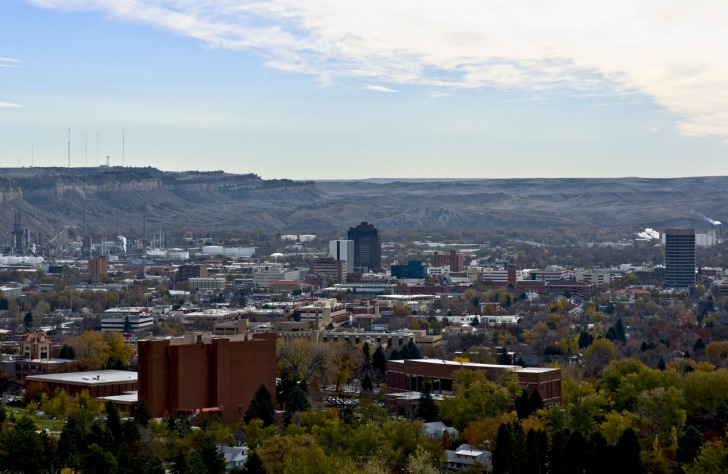
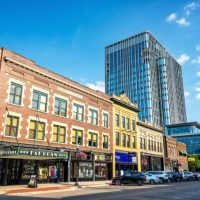










Overall, Billings, Montana seems like a great place to live with its low housing costs, cost of living, and plenty of activities to do. However, it does have its drawbacks such as harsh winters, high crime rate, and low-income jobs. It ultimately depends on the individual’s preferences and priorities.
The local food scene in Billings is diverse and delicious. From local breweries to unique eateries, you’ll never run out of dining options. But if you’re a fan of big-city amenities, you might find the entertainment and cultural offerings somewhat limited.